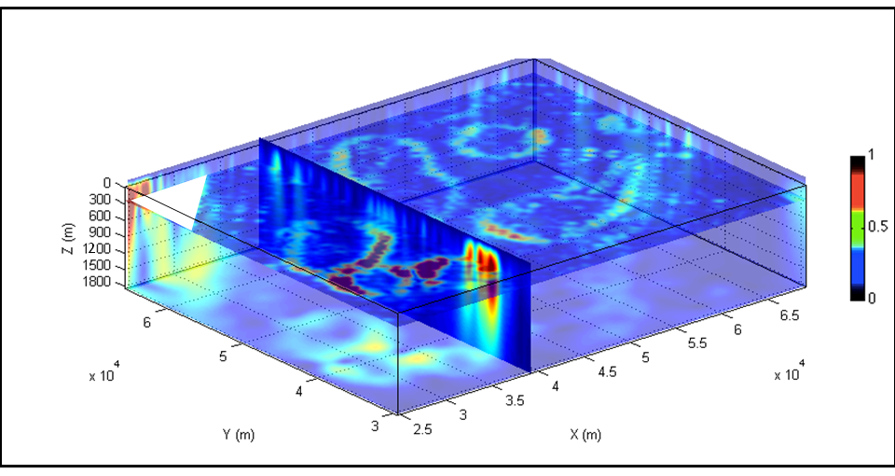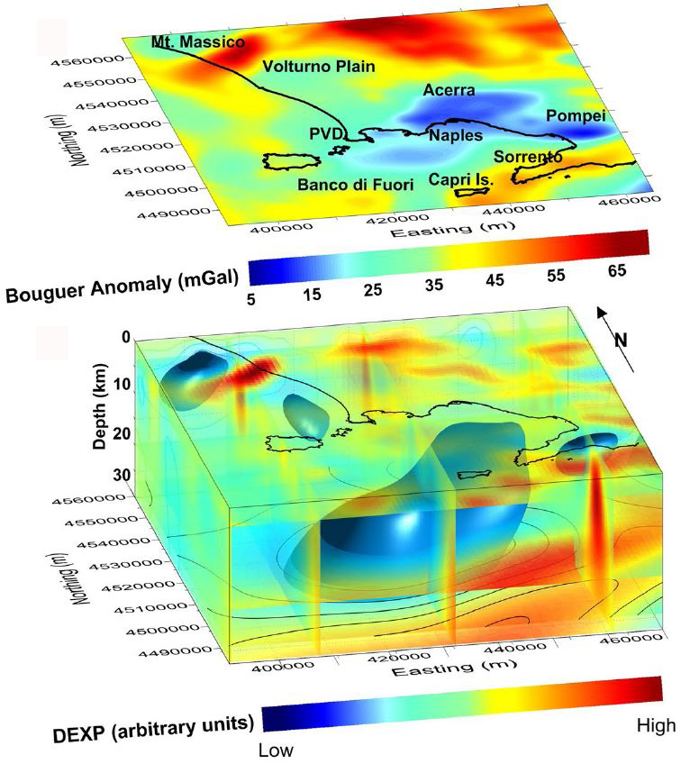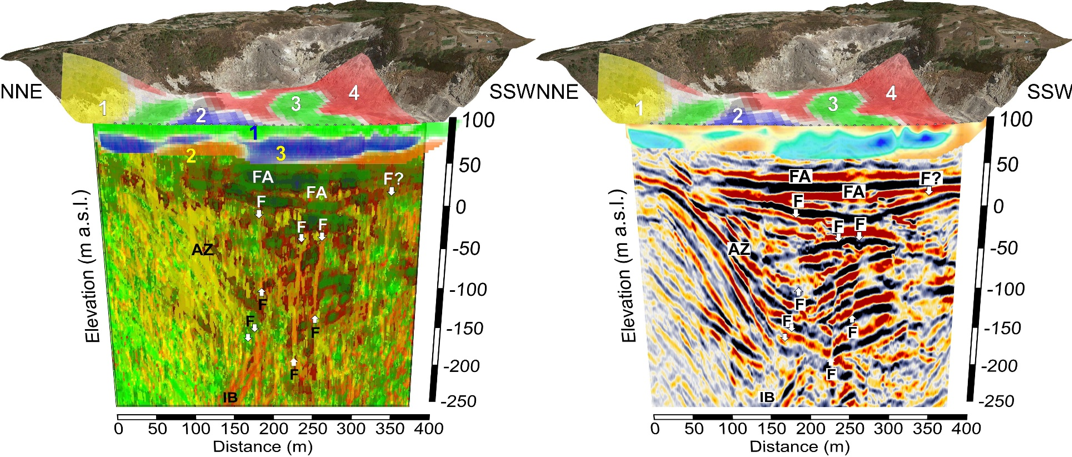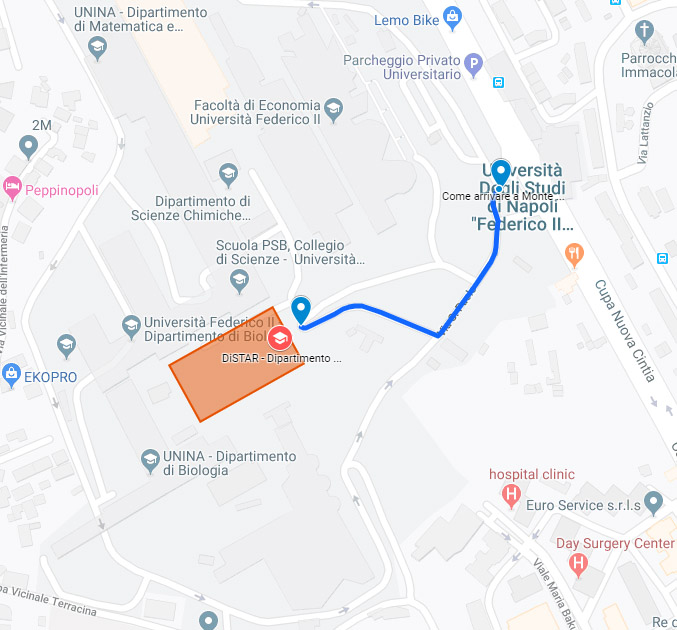Via Vicinale Cupa Cintia 21

Imaging and inversion of geophysical data
Staff: Pier Paolo Bruno, Maurizio Fedi, Giovanni Florio, Valeria Paoletti
Post - Graduates: Jamaledin Baniamerian, Yemane Equbamariam, Maurizio Milano, Ivano Pierri, Andrea Vitale, Diego takahasci
This research topic focuses on the joint interpretation and/or inversion of large, multivariate geophysical datasets, a key issue for oil industry and for reduction of geological hazards. For this task we employ machine-learning techniques; 3D inversion algorithms and fast imaging methods. Our commitment to this interesting field dates back to the 90s, and at present we continue our involvement with active collaborations with industry (ENI) and other Universities (such as DTU, Denmark) and by developing new algorithms that are aimed at retrieving the underground distribution of source parameters, such as the P-wave and S-wave velocity, density, magnetic susceptibility and electrical resistivity. Details of all research themes falling within this research topic are listed below.
Development of original interpretation tools and software:
Continuous and discrete wavelet transform; multi-resolution analysis applied to the local residuation of potential fields;
- Multidimensional spectral analysis;
- Multiscale methods for automatic estimation of parameters of potential field, deformation field and low-frequency EM sources;
- Edge analysis of geophysical data;
- Fractal and multi-fractal analysis of geophysical data;
- Imaging of potential fields: migration, DEXP and correlation algorithms ( 1-2);
- Large-scale methods of 2D and 3D linear and non-linear (constrained) inversion of gravity, seismic, magnetic and resistivity data, such as: Inversion of Inhomogeneous potential fields, Self-constrained Inversion and Focusing, joint inversion of geophysical data, tools for monitoring the retrievable depth-resolution in potential-field interpretation (Depth Resolution Plot).
- Machine Learning methods for modeling and interpretation of multivariate geophysical data ( 3).
- Imaging of CSEM data;

Fig. 1. Depth analysis on diapirs in Nordkapp basin by DEXP (Fedi & Pilkington, 2012) applied to magnetic data (Fedi, Florio & Paoletti, 2014).

Fig. 2. Interpretation of the Gravity field of the Campania Active Volcanic Area: Upper plot: Gravity anomaly map. Lower plot: DEXP image of the sources of the anomalies (Fedi et al., 2018).

Fig. 3. Comparison between the results obtained from K-means and SOM algorithms on three geophysical datasets acquired in the Solfatara Crater (left) and the original seismic reflection and electric tomography data (right). Symbol explanations. F: fault/fracture (also highlighted by vertical arrows); AZ: anomalous zone; FA: fluid accumulation; IB: intrusive body (Bernardinetti & Bruno, 2019).
Projects
Research project DISTAR-ENI: Development of Machine Learning techniques applied to potential fields.
National Collaborations:
- Istituto Nazionale di Geofisica e Vulcanologia (INGV), Sections of Catania, Naples and Rome
- Osservatorio Vesuviano (OV), INGV Sezione di Napoli
- Università degli Studi della Calabria (UNICAL), Cosenza
- Università del Salento, Lecce
Centro di Geotecnologie, Università degli Studi di Siena, S. Giovanni Valdarno (Arezzo)
- C.N.R., IREA- Istituto per il Rilevamento Elettronico dell'Ambiente, Naples
- C.N.R., ISMAR- Istituto DI Scienze Marine, Naples
- ENI, San Donato Milanese, Milan
- Università degli Studi di Cagliari
International Collaborations:
- The Comenius University in Bratislava, Slovakia
-The University of the Witwatersrand, Johannesburg, South Africa
- The South Valley University, Qena, Egypt
- The Danish Technical University (DTU), Lyngby, Denmark
- Geological Survey of Canada (GSC), Ottawa
- Institute of Sciences and High Technologies and Environmental Sciences, Kerman, Iran
- Getech, Leeds, UK
- National Geophysical Research Institute (NGRI), Hyderabad, India
- The Aarhus University, Denmark
 English
English  Italiano
Italiano 




